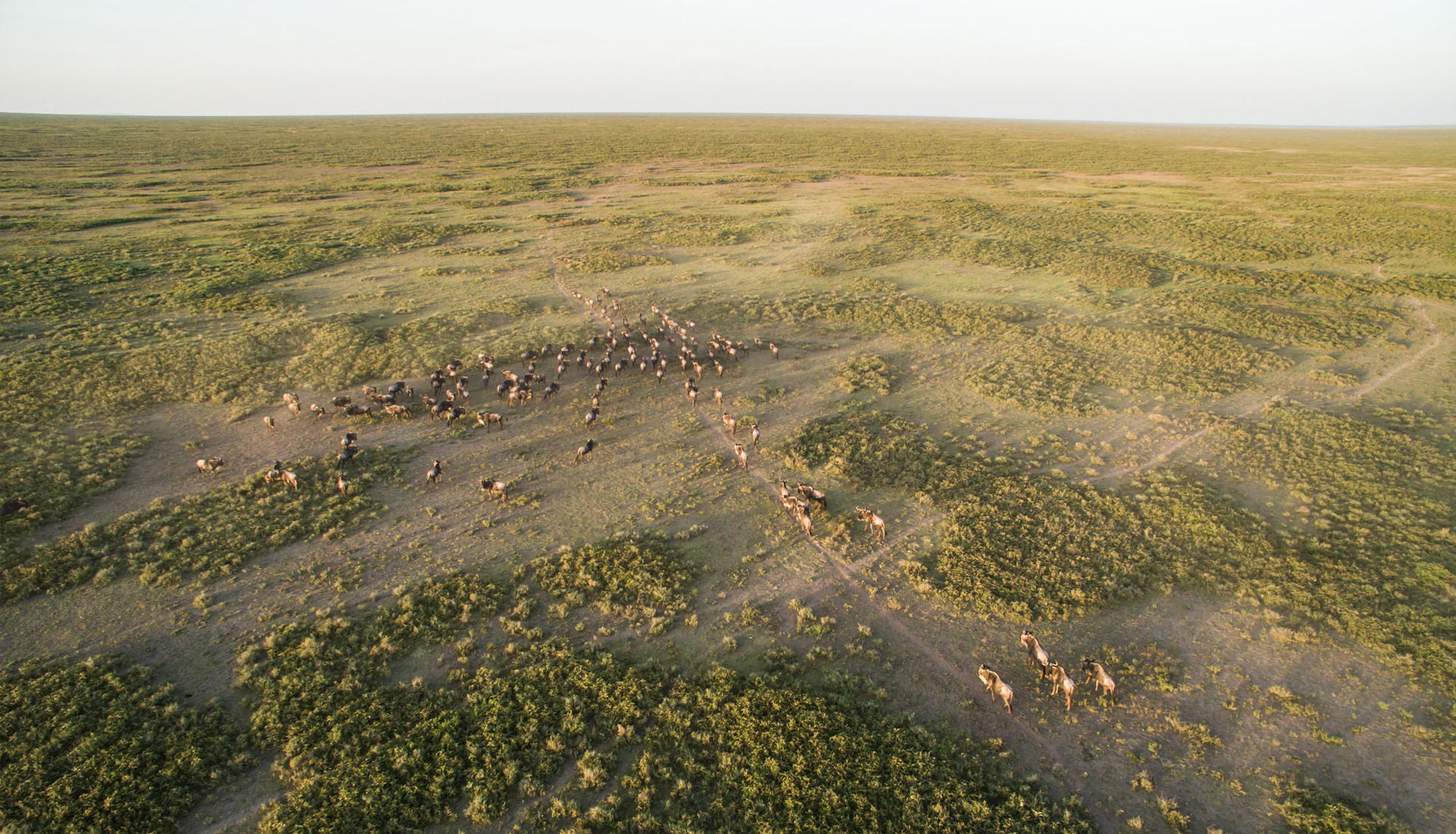One of East Africa’s greatest tourist attractions is the most eminent wildebeest migration in the Grumeti River. This especially happens in the months of May and November. These are the months when the antelopes, zebras and other animals join the very large groups of wildebeest to cross the river into greener pastures, and it’s a spectacular scene. That is what entails the great migration, as the other months are for mating and calving.
There’s not a place to visit in Africa quite like Tanzania. Right from the breathtaking scenery the lands rise and fall gracefully. The caldera of the Ngorongoro crater seems to give the impression of a mouth agape with incredulity. A caldera is a collapsed mouth of a volcano anyway, so the simile fits. Huge herds of zebras and wildebeests are found in the caldera. You also get to see the magnificent herds of elephants taking strolls among the acacia. The Serengeti offers much more than a good experience. It leaves you awestruck. On a safari to Tanzania, there’s a lot to see, but the migration always stands out.
The vast Serengeti is very interesting. There are a lot of captivating phenomena to capture. Form about 70 species of large mammals to the 500 species of birds that live there. A camping trip here would be engrossing since you will get the actual raw experience during the day and night. You will hear the calls, cries, roars, snarls, chirps and all possible animal sounds at night, then get to see the animals and birds responsible for them the morning after.
Grass is always greener on the other side, this phrase also applies to the 1.5m wildebeest who follow the rains in search of better pasture in the protected Serengeti landscape. They are usually in the company of some friends; about 200,000 zebras and about 400,000 gazelles. Meanwhile, on the other side, the famously notorious predators of the land are zealously and hungrily waiting for the beautiful gracious herds. This is now the chance you get to marvel at nature and relish every moment. Feel the thrill of incredible speed, and bask in the sound, texture and color of raw nature. The wild.
There is nothing more comforting than a certain promising future. That’s why the wildebeest calves between January and March. These months boast of vast new grass in the Serengeti. The mothers therefore have plenty to eat and raise their calves until they are strong enough for the migration; in which a manifold of animals join them for the hazardous crossing of the extremely dangerous Grumeti River. They reach the famous Masai Mara conservation park by September where they stay till November and commence their return to the Serengeti. It’s a beautiful journey and a way of life.
Serengeti isn’t the only place that can demonstrate the beauty of Kenya and Tanzania. There is also the Ngorongoro Crater which has more than 20,000 different animals that live there. This is a place where you encounter the beautiful Maasai people with their cattle and goats, alongside black rhinos that are an extremely rare sight. To even further demonstrate the significance of this crater, at Olduvai Gorge within the crater, archaeologists discovered the oldest evidence of human existence.
Imagine one baboon, two baboons, three, four, ooh! , hundreds of baboons in one place. Lake Manyara National Park which sits at the edge of the Great Rift Valley, provides a perfect habitat for these baboons. It is one of the largest populations of baboons in the world. Flocks of pink flamingoes, yellow-billed storks and tree-climbing lions also call this beautiful park home. The Tarangire National Park is another site to behold. Very large herds of elephants are found here. It is at the same place that 300 species of breeding birds live. Most grazers come to the Tarangire River every year. This includes the wildebeest, elephants, zebras and elands.
Tanzania being the largest country in East Africa offers some of the most memorable travel experiences in the continent. Big great parks some of which extend into Kenya, are amazing places for large numbers of animals and variety, nature, scenery and the incredible wild. From aardvark to the gorilla, the big five, hippo, cheetah, giraffe, and the most heart-thundering migration of the wildebeest.
Great Migration in Africa: Process
As the Serengeti dries up, the herd starts heading west towards the Grumeti River. The herd drinks over 3 gallons a day depleting water in the river by June. It is left muddy and filled with crocodiles. The herd then starts towards Maasai Mara.
Crossing the river:
It is now August. The majority of the herd has reached the river. They begin crossing at Mara River, natural selection is brought to the fore by the carnivorous crocodiles that habit there. The herd includes wildebeests, zebras and antelopes take a daring crossing that will see them reach greener pastures. To add more to the danger ahead, the herd finds lions, cheetahs and hyenas waiting on the other side.
The Return of the Wildebeest
As soon as the rainy season begins in Tanzania, the herd starts the Journey back to the Serengeti. On their way home, they collectively devour over 5000 tons of grass. Then between the months of January and March, they give birth to over three hundred thousand calves.
Best time to see all this:
The answer is July and November. This period gives one a luminary experience of the herd crossing the Grumeti River in July and grazing in the Mara Plains in November. Experience the great migration in Africa for yourself with us. Find the best package and be ready for an exquisite safari.

